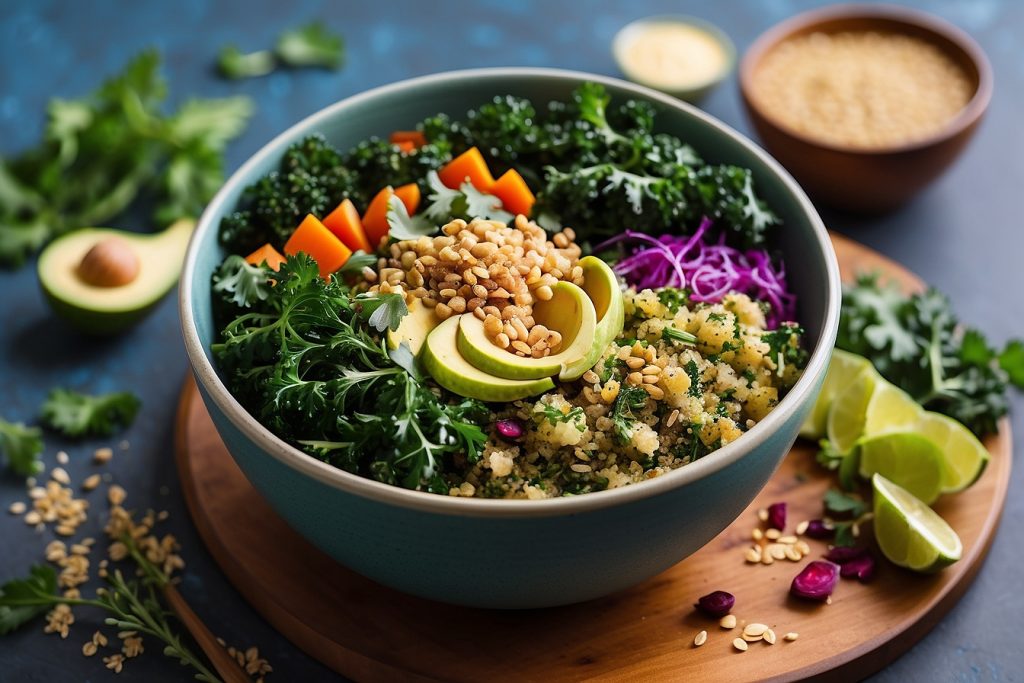Welcome to our Ayurvedic Quinoa and Kale Power Bowl Recipe, a nourishing and dosha-balancing dish that’s perfect for revitalizing your day. In this Ayurvedic recipe, we’ll guide you through the art of creating a harmonious meal that balances Vata, Pitta, and Kapha doshas. As we explore the dosha-balancing properties of each ingredient and provide step-by-step instructions, you’ll learn how this delicious bowl can be customized to align with your unique dosha constitution. Discover the goodness of quinoa, the cooling nature of kale, and the soothing effects of lemon juice as we embark on a journey to promote not just a delicious meal but also holistic well-being. Join us in uncovering the secrets of this Ayurvedic Quinoa and Kale Power Bowl and find out how it can play a vital role in your dosha-balancing journey

This recipe is not only a treat for your taste buds but also a nourishing choice for your body and soul. Give it a try and let the vibrant ingredients revitalize your day! 🌱🍲😊